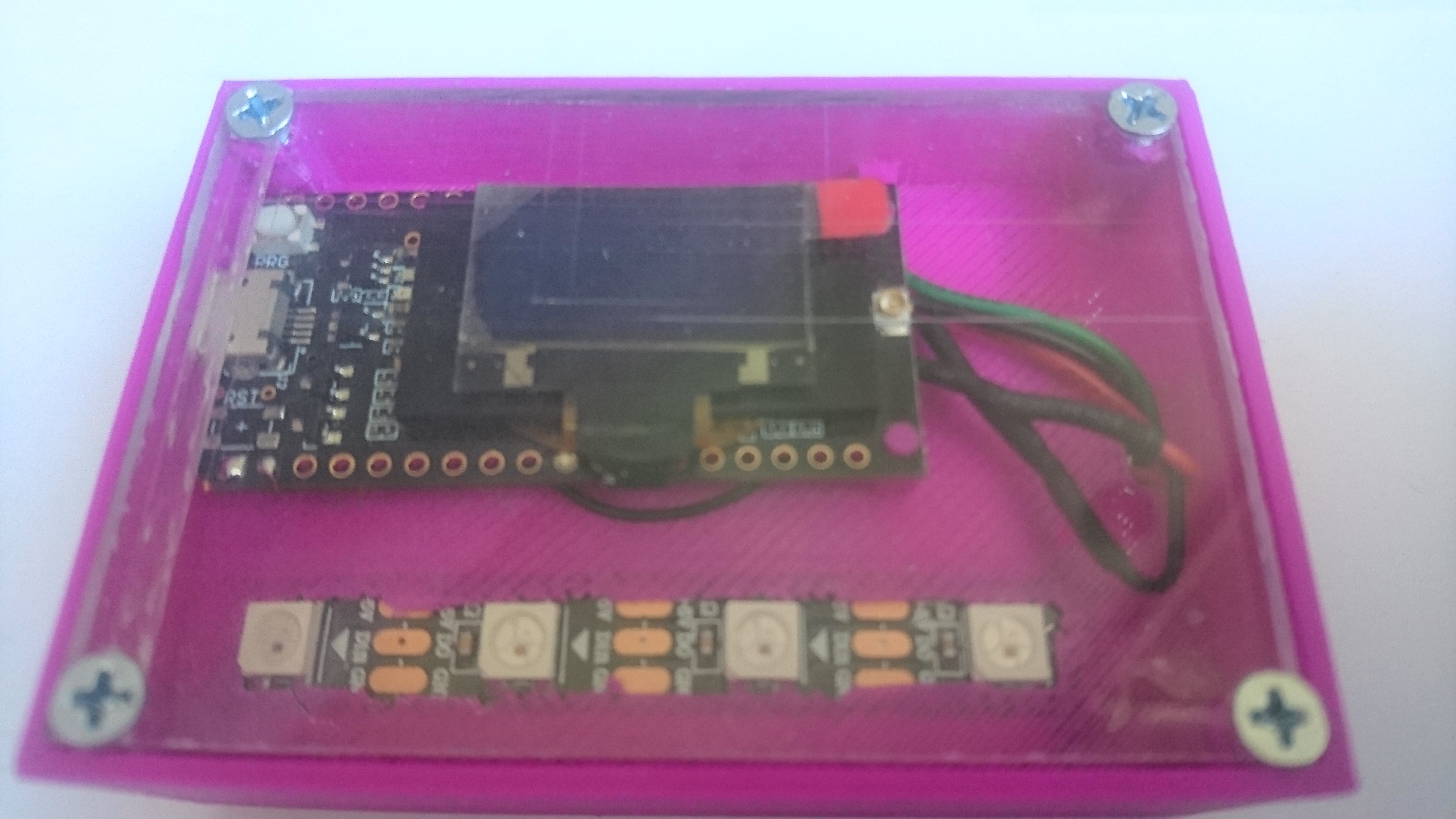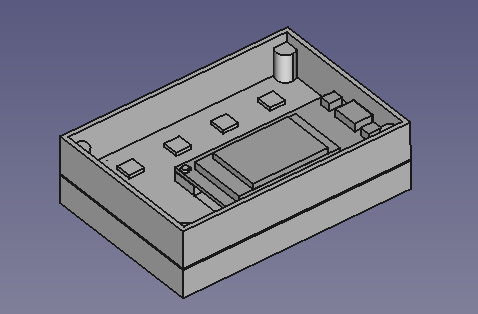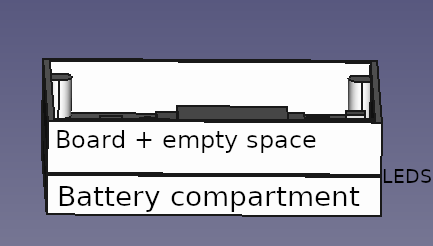
One of the early goals I had for this project was to design the enclosure in FreeCAD. This is partially because I don't have Fusion 360 at home and partially because I wanted to see how productive I could be using FreeCAD. The process was a bit painful but I did manage to get the design done.

And being that I was basically designing this around parts I had sitting on my desk, the 2500mAh battery seemed like a good fit. The ESP32 devboard I had was slightly smaller than the battery width, this allowed me to move up to 4 LEDs which could be used to indicate status of prior passes.
What this resulted in was the battery dictating the overall size and filling it's entire compartment. The LED strip was installed from this side prior the the battery being put it and passed through holes into the front compartment. This also meant the parts where all stacked.
Battery > LED Strip > ESP32
The LED strip is negligible in this case but having the board and battery stacked caused the overall thickness to be more than desirable.

And, this arbitrarily selected battery was... HEAVY. First time wearing it concluded with an awkward tugging at my t-shirt confirming my suspicions it was going to be too thick and too heavy.
But It Worked!
As a proof of concept though, it did work. The battery last about a day and a half without much concern with battery life from the firmware. I've sense started basic power tuning and found it idles around 60mA. Quite a bit better than I would have expected given I never turn the WiFi off, ping the SatNOGS API once 1 minute and like mention, have given no concern to battery life so far.
Next Steps
Next I'll be going through the firmware code.
- Remove delays in favor of FreeRTOS events
- Sleep the WiFi radio between API hits
- Use timeouts for LED switching rather than loop+delay
- User timeouts for API hit rather than loop+delay
SuperCon
I'll be bringing this project with me to SuperCon in two weeks! Even if I don't manage to make it to V2, this current version should be a fun conversation piece. Let's chat about Space, ESP32s, satellites and SatNOGS! See you there!
 morgan
morgan
Discussions
Become a Hackaday.io Member
Create an account to leave a comment. Already have an account? Log In.